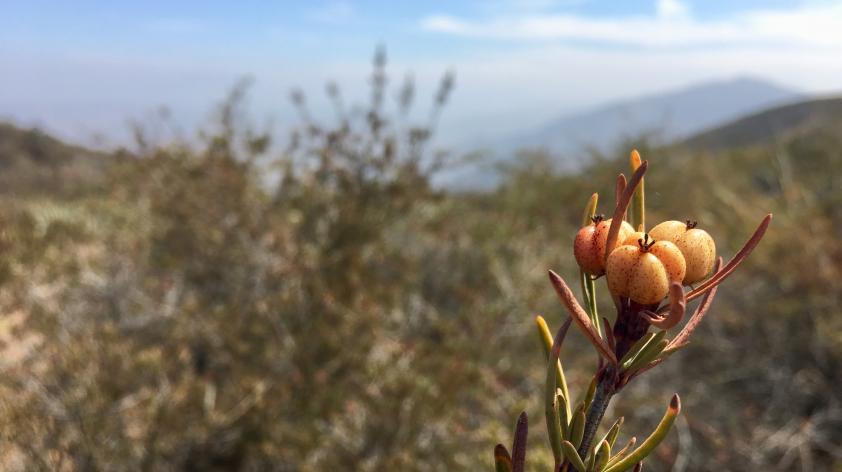
Making a Blood Sacrifice to Conserve Plants
I hate ticks. I suppose I don’t actually hate an entire order of arachnids, but I think we can all agree that the idea of being fed upon is unpleasant, to say the least. There is a trail we’ve been using this year that is home to, presumably, thousands of ticks. Lightly brush against a shrub on your way down this path and it is very likely you’ll have picked up a few bloodthirsty hitchhikers, determined to find their way to some warm, dark crevice to start their meal.
I have brushed my leg against a single branch along this trail and found no fewer than 12 ticks clinging to my pants. We assume this route is frequented by a large population of mule deer, what else could sustain this hoard of tiny monsters? But, there are plants that need our help, so we’ve tucked our pants into our socks, sprayed some repellant, and traversed this tick-highway no fewer than 5 times so far this year, monitoring rare plant populations to eventually make a few seed collections.
A population of Clinopodium chandleri is firmly rooted in the heart of this enemy territory. Known commonly as San Miguel savory, after Mt. San Miguel in southern San Diego County, this species is a member of the mint family (Lamiaceae) with small white flowers and peppermint scented foliage. It typically grows on the shaded, relatively moist, northern slopes of steep mountains, often in the underbrush. It is found in gabbroic or metavolcanic soils, which are uncommon, from southern Orange and Riverside Counties south into northern Baja. There are roughly 30 populations known to exist in the United States, and almost all of them occur in San Diego County. This is a G2 species, meaning it is imperiled throughout its global range, and it’s threatened by recreational activities, invasive plants, increased fire frequency, and climate change.
We were determined to conserve this species, but imagine having to climb through the underbrush to find these plants, knowing there are ticks everywhere. Furthermore, the plants produce hundreds of small flowers, but each flower only produces 1-4 small seeds. After finding a plant we slowly had to pick through the dried flowers to ensure there was ripe seed, certain that ticks were raining from the sky and crawling under our clothes. We eventually collected seed from 45 separate individuals. This seed collection will allow us to perform some germination and propagation research before drying and freezing it for long-term storage and conservation.
Tetracoccus dioicus is another species we found in this area. Commonly known as Parry’s tetracoccus, this is a perennial shrub with light green leaves and branches that are red when young. Interestingly, this shrub is monoecious, meaning that each shrub produces two different types of flowers. A single shrub produces both male flowers that only contain pollen-producing stamen, and female flowers that only contain the ovary producing carpels. Often monoecious plants have staggered blooming times, meaning one flower type blooms before the other, usually with a small overlap period. This ensures that there is a period of time in which cross-pollination with other individuals is necessary, but also ensures that there is a period of time in which self-pollination is possible, in case there are no potential partners nearby.
This species shares a nearly identical range with the San Miguel savory discussed above. There are about 50 known populations, the majority of which occur in San Diego County. It is a G3 species, meaning that it is considered vulnerable throughout its global range. These shrubs are slow to develop seed. We’ve been monitoring seed development since June, and are planning on making the seed collect in September.
We’ve willingly offered a blood sacrifice in our quest to conserve these plant species, and we are happy to have something to show for it! Conserving these seed collections in our seed bank will help ensure that the diversity we have in our beautiful county remains intact. From uniquely adapted plants and pollinators, to parasites and their delicious hosts, we all share this planet and we are excited to be working toward ending extinction in this county and beyond.













